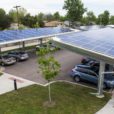Just last year, almost 3.5 million people visited Montana’s famous Glacier National Park. Tourists raved about its breathtaking scenery and monumental glaciers, and TripAdvisor users ranked the park as the state’s top attraction.
But the park’s glaciers are rapidly melting away. Most scientists predict they will all be gone by 2030 if current global climate trends continue. Montana is also suffering from the effects of climate change in various other ways including wildfires, more frequent and severe droughts and heatwaves, and increased scarcity of freshwater. At the same time, coal mining remains a significant source of revenue for the state, which ranks as the 4th highest per-capita carbon polluter in the US.
In December, Montana Rep. Mary Ann Dunwell (D) introduced a carbon pricing bill, HB 193, that would place a fee on emissions from the state’s largest polluters. The proposed legislation, known as the Montana Climate Action Act, is slated for a hearing at the House Taxation Committee on January 31st. While it is unlikely that the bill will pass through committee this session, it shows the growing strength of carbon pricing as a policy solution, even in traditionally conservative states.
HB 193 proposes an initial fee of $10 per ton of carbon that would increase by $1 annually until the state’s carbon pollution levels are in compliance with its delineated emission reduction targets of 21% below 2012 levels by 2030. This fee only applies to large polluters that emit at least 25,000 metric tons of carbon.
According to Dunwell, the bill could serve as a steady revenue source for a state that has suffered from severe budget cuts.
“Montana needs the public dollars,” Dunwell said in a phone interview with Climate XChange. “This bill would generate hundreds of millions in revenue that would serve our public, and some of that money is directed to energy-transition communities, the communities that have already been struggling. “
The bill calls for revenue to be distributed according to the following:
- 50% towards the general state fund
- 20% for disbursement in accordance with state law
- 10% for climate adaptation efforts
- 10% to help vulnerable communities transition
- 10% to address environmental damage caused by pollution, such as by revegetating polluted land or rehabilitating polluted bodies of water.
To support adaptation efforts, revenue would be allocated to the Healthy Communities Account, which would provide grants to organizations working to prepare communities to adapt to the challenges caused by climate change. This includes fire suppression and prevention, reducing public exposure to pollution, and developing health programs to increase preparedness for climate impacts, including extreme weather.
Furthermore, the Community Impact Account would provide grants to local governments and economic development organizations, to help communities transition away from fossil fuels, particularly those posed to be most impacted by the shift.
“This bill will give them redevelopment grants to come up with sustainable jobs for future generations,” Dunwell said. “And they can work those jobs breathing clean air and drinking clean water, something that, frankly, is guaranteed in Montana’s constitution.”
While Montana’s emission levels are relatively insignificant in the context of overall U.S. pollution — comprising only 0.59% of the country’s emissions — passing a carbon pricing bill would be a significant step for carbon pricing, and provide the state with a much-needed revenue source. This type of direct price on carbon emissions has never been accomplished in the U.S., although there are regional cap-and-trade programs.
Traditionally, it’s been difficult for carbon pricing bills to gain traction in conservative states. While Montana Governor Steve Bullock is a Democrat, Republicans hold firm majorities in both the House (58-42) and Senate (30-20).
However, Dunwell said she is not deterred. Last summer, she spent time at a National Caucus of Environmental Legislators (NCEL) conference, where she learned of ongoing carbon pricing efforts in Utah, where Rep. Joel Briscoe (D) introduced a carbon pricing bill (HB 403) that was co-sponsored by two Republican legislators. While the bill didn’t ultimately pass in Utah’s short session, it gained a surprising amount of momentum and sent a clear message: carbon pricing movements can and should be taking place in conservative states.
Inspired by this action, Dunwell reached out to longtime environmentalist Anne Hedges of the Montana Environmental Information Center (MEIC) to help her write a carbon pricing bill of her own. Hedges, who has been a lead lobbyist at MEIC for more than 25 years, advised Dunwell on how to frame the legislation.
“She [Hedges] told me I should be keeping [messaging] simple,” Dunwell said. “This is about climate change. If you believe in climate change and the science behind it, vote for this bill, and if you don’t, don’t.”
At the same time, on the Senate side, Senators Mike Phillips (D) and Dick Barrett (D) have introduced carbon pricing bills of their own. Phillips’ bill utilizes an offset component, while Barrett’s only applies to electrical generators. Like Dunwell’s bill, Phillip’s and Barrett’s will likely have difficulty getting through committee.
Nevertheless, the filing of Montana’s carbon pricing bills illustrates progress for a state few would expect to lead on the issue.
“We absolutely need to do something about what we’ve already seen are the devastating impacts of climate change,” Dunwell said. “Our constitution guarantees the right to clean and healthy environment, and this bill does that.”
If you want to stay informed on state carbon pricing campaigns across the country, sign up for the State Carbon Pricing Network Newsletter here and stay tuned for future Climate XChange updates.









